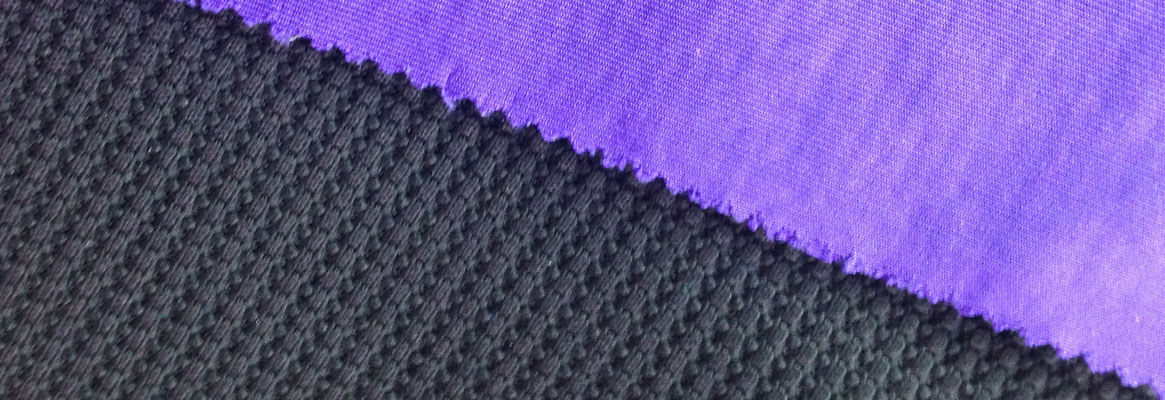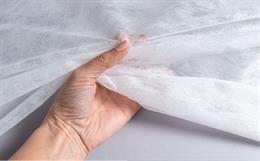The world had witnessed a financial tsunami in 2008 and theeffect is still lingering. Officially, the United States has been in a recessionfor at least a year or so. And, as the author pens down this article news from the United Kingdom is such that the recession has been officially declared there.Although India and Asian economies are not totally decoupled from this globaleconomic tsunami, the effect is not as harsh as in the developed economies.Recent statistics indicate that Asia grew around 8.7% while banks werebellying-up in the United States. It is expected that China's GDP will grow around 8% and India will grow around 7%, whereas the GDP growth in the US and Europe will be less than 1%. Taking the case of India specifically, the growth expectationscan be met if there is a cautiously regulated growth policy spanning threeimportant sectors, i.e., service, manufacturing and agriculture.
What is happening in India Recently?
A day after Oscar nominations, it is a feel good story for India. The I ndia centric SlumDog Millionaire has received 10 Oscar nominations and issecond in the Oscar ranking this year for maximum nominations. One may ask whatthis has got to do with the Indian textile industry. As we all know and agree, economyis based on facts as well as perception. This we experience in our day-to-daylife with the rise and fall of the stock market which is not only based oneconomic numbers but also perception. India Inc. is really doing relatively well.The author was in Gujarat recently in January. He feels honored to be invitedto present a paper in the Seminar on Textiles and Apparels of the VibrantGujarat Global Investors Summit. Surely, Gujarat and India have showcased tothe world that there is no recession and there is progression. At this time,where on earth that one can experience such vibrancy and see a forward lookingindustry than India? It is really mind boggling to note that investments worth $241 billion dollars have been inked. This is quite a contrast to the situationin the USA where President Obama and the Democratic Congress are pushing for astimulus package worth 825 billion dollars. This consists of tax credits andloans as part of the Governments plan to boost the economy. Whereas, resultsfrom the Vibrant Gujarat show that India Inc is optimistic and highly confidentto sign Memoranda of Understanding with the State of Gujarat for investmentsworth nearly 1/3rd of the United States stimulus package. Thisclearly shows that the economic pendulum is swinging from west to east. Theoptimism and the confidence that are vibrant in India should be ceased upon totranslate into tangible projects. Indian Inc., Government of India and theinternational community have to cash in on the current opportunities so that cashflows really kick in within two to three years. Although, it is reallyambitious to see return on investments on proposed projects within 12 months,due to the global consumer and economic negative situations, it would be judiciousto expect positive signals beyond summer 2010. This is a good opportunity forthe Indian manufacturing industry and more specifically the Indian textileindustry to have some breathing space to concentrate and focus ondiversification beyond the commodity textile borders.
Diversification in the Textile Industry: The Need of theHour
Microsoft and Intel are household names and it would have beenunimaginable to see them downsize and layoff people a few years back. But thereality is that, within the next 24 months it is reported that Microsoft andIntel will lay off 5000 staff each and possibly downsize their operations. Thissituation clearly sends a signal to Indian Inc. that the old financial adage iscorrect, "do not put all eggs in one basket." No doubt that India flourished and prospered due to its service sector since the 90s. It is not at allpossible for India to just focus on service sector alone anymore. Other twomajor sectors such as the manufacturing industry which is in the mushy middlebetween the service and agriculture sectors provides us with a nice platformfor growing India economically. And, within the manufacturing sector,traditional segments such as textile and leather industries occupy an importantrole as they not only help with export earnings but also provide ample jobopportunities. With over 70 % of Indian population still living in semi-urbanand rural areas, these traditional sectors that have employment generation opportunitieshave to grow.
Is this possible in the current economic situation? As theoutputs from these traditional sectors are predominantly non-essentials, withthe consumer buying power shrinking in the world, how can these industries grow?Textile industry is quite fortune to have an edge over the leather sector as thisindustry can deliver some important products which have reached near essentialsstatus. These products include those textile items that are on the border lineof indispensible items in our day-to-day life such as medical textiles, hygieneproducts such as baby and adult diapers and baby wipes, etc. Another segmentwhich has a defined market albeit tough to penetrate is the defense textilesector. As it is evident from the above mentioned products although these arenot life saving essentials, due to their functionalities and applications inour day-to-day life, they have become somewhat essential commodities. This putsthe textile industry in a better situation and gives an opportunity for diversificationeven in the current economic scenario.
What is in it for the India Textile Industry in the Near Future?
The Number-1, Number-2 and the Number-3 priorities for the Indian textile sector is diversification. What should be in the minds of textile industrialists, policy planners and entrepreneurs who are looking for growth? The answer is to look into technical textile products and the markets for technical textiles. With all the buzz about technical textiles and nonwovens in India for the past five years, a legitimate question to ask is whether is there any growth? The answer is yes, but how to seize the opportunity is the question mark?
Opportunities for Growth: Points that Need Some Pondering
- Even in the developed economies where the GDP growth is expected to linger around 1%, the growth in the nonwovens and technical textiles sector is around 6%. In the case of India, our prediction was in double digits based on the earlier growth data from the World Bank. This figure has been recently vindicated by a Government of India sponsored study by ICRA Management Consultancy. So, technical textile industry is a sunrise sector in India.
- Opportunities not only exist in the development of fabrics or roll goods, but also tremendous opportunities exist in converting these fabrics into applicable and useful products. This aspect is of particular importance to the growth of the Indian textile sector because these value-addition operations can be easily handled by small and medium scale enterprises. In this harsh economic situation, it will be really impossible to invest in "state-of-the-art" double beam spunbond units with a cost of several million dollars. However, if there is a concerted effort towards growing the value-adding converting segments of the technical textiles industry that can offer tremendous scope for small investors, then there will be a tangible growth in technical textile sector within next two to three years.
Immediate Actions Necessary to Boost the Technical Textiles Sector
- First and foremost, it should be clearly understood that technical textiles sector is not a nonwoven sector alone. Technical textiles span the entire spectrum of the fiber to fashion supply chain, which involves different processes and products.
- Focus on backward integration model that has led to some real successes in the conventional textile industry in India.
- The development of the technical textiles sector should not only focus on investments by big groups in India that can lead to major projects. However, it is time that greater awareness and efforts have to be put into creating converting sectors so that small scale entrepreneurs can benefit. The investment for this growth can be as low as 10-25% of the cost of setting-up composite technical textiles units and at the same time will provide opportunities for a number of players. Of course, big players are an important part of the growth equation for the Indian technical textiles industry.
- Growth can be achieved by including the cluster concept in the technical textiles sector. This way, talents, resources and marketing opportunities can be pooled together towards a common good and the growth of the nascent technical textiles sector in India.
- Government resources and the industry machinery should work in harmony and better equip themselves with information on how to market technical textiles in both foreign and domestic markets.
- The Centers of Excellence in technical textiles that are in operation should focus on small entrepreneurs immediately and create awareness on projects that can lead to marketable products with minimum investments. In this connection, the coating and laminating laboratory at Manmade Textiles Research Association (MANTRA), Surat, Gujarat can serve as a great resource to boost the awareness and investment interests in industrialists.
MANTRA is ideally located to help the powerloom sector to develop coated products that have value-added and functional applications. A cluster could be constituted that could utilize the resources in and around places like Surat in providing opportunities for small to medium scale entrepreneurs.
Cluster Development is a Timely Need
As technical textile industry is a knowledge dependent industry, it is not possible to be competitive even for large industries without constant input of new information. Pooling of resources together by all stake holders with the knowledge source in the center will be vital for the development of the technical textiles industry in India. In this connection, the Government already has done a valuable service in creating category specific resource centers such as Agro, Medical, Geo and Protective textiles. These Centers of Excellence should be utilized to create knowledge hubs to promote the growth of technical textiles sector. For example, MANTRA being a part of centrally funded Center for Agrotextiles will be great a resource If it outreaches to entrepreneurs and trains them in processes that are at their disposal such as coating and laminating to develop products that of multiple applications such as coated textiles for defense, antimicrobial treated bed liners for hospital applications etc. The author is positively hopeful that this is what happening in Surat right now.
To sum up, growth in the technical textiles sector is certainly there if the effort is concentrated towards developing converting sectors that develop products that are needed by consumers. Again quoting an old adage, "Consumer is always the King." Those industries that come to the market first with the products that are useful and competitive will be the winners. Just for example, electronic giants Sony and Samsung are currently reporting huge losses that have never happened to them over a decade. On the other hand, Apple is booming with its iPhone sales. The sales figure is astonishing that Apple sold 22 million iPhones globally in the last quarter of 2008. What does this tell us? Customer centered innovative products will always be the winner. In the manufacturing industry like textiles and in particular technical textiles sector in growing economies like India, it is a pooled effort that will help with the growth. In other words, cluster model will be the way to go forward for boosting the interest and affordable investments from SMEs.
The article was originally published in Textile Review, February 2009
About the Author
The author is associated with Nonwovens & Advanced Materials Laboratory, Texas Tech University, Lubbock, Texas, USA.








